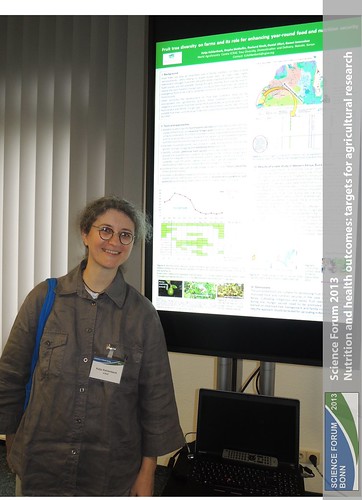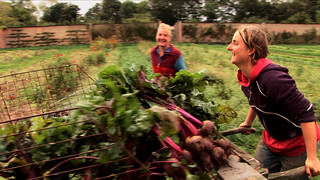agroforestry
ICRAF on Improving Agroforestry Farming Systems
Fri, 09/22/2017 - 10:01 — mustamin.fadli
Agroforestry Won't Save the World, but our Planet
Thu, 09/21/2017 - 19:06 — marlemkeAccording to the numerous audience's questions, agroforestry is in demand.
Of course! In terms of water and nutrient efficiency, trees are optimum, and hence are key for solving problems like nitrogen leaching and drought mitigation. Moreover, they can provide an additional income source for (smallholder) farmers in terms of fruit, medicine and timber. Their ecological value cannot only be reduced to shade provision and hydraulic lift for water and plant nutrients, they also function as a shelter belt for annual crops nearby. Trees also drastically reduce wind speed, minimizing transpiration. Niels Thevs from ICRAF reinforced these points in his oral presentation.
As far as resource efficiency is concerned, trees can substantially contribute to mitigate climate change and secure the existence of smallholders.


Tropentag Poster Session Diary
Thu, 09/21/2017 - 13:14 — marlemkeAs such, we want to know how nature behaves. We want to mimic it, and often we want to be in control of it. We sometimes fight it, and sometimes cooperate with it.
We experiment with biological agents such as fungal isolates to fight root-knot nematodes on pineapple plantations in Kenya to avoid unnecessary pesticide use. Or we compare a conventional single-culture cacao cropping system with a agroforestry system, a natural, resilient system that copes with rapid changing abiotic factors due to climate change. Of course, we don't want to deal with the origins of the problem, which are usually man-made. What about reducing waste? Rethinking nutrition? Learning to make do with less? Ultimately, we all strive for the same: living our dreams.
Agroforestry and fruit diversity enhance food and nutrition security
Tue, 09/24/2013 - 09:38 — Louisa Wong Katja was presenting in the knowledge share fair during SF 2013
Katja was presenting in the knowledge share fair during SF 2013
Transition town – the story so far
Fri, 09/20/2013 - 23:34 — Louisa Wong Leigh Court Farm in England
Leigh Court Farm in England




